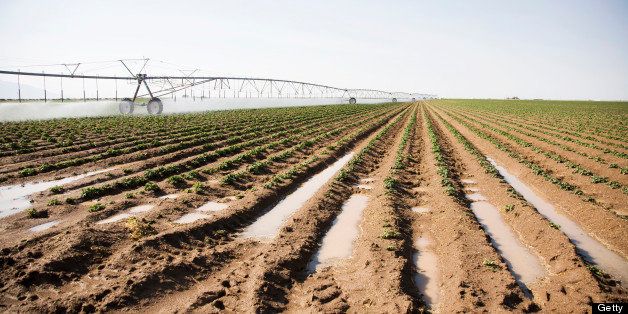
On paper, northern Colorado's recovery from months of drought appears to be nearly complete.
The plethora of moisture in recent weeks has put precipitation and snowpack figures in the South Platte River basin above average and, collectively, reservoir levels are getting close to normal.
According to the most recent U.S. Drought Monitor, northern Colorado is no longer in a "drought" -- being labeled instead as "abnormally dry."
However, that doesn't mean everything's quite peachy keen for the area's farmers.
"Things are greatly improved, but we're not home yet," said Gus Sidwell, who grows corn and alfalfa near Gill. "We're probably only at first base at this point."
Many northern Colorado farmers today have far more water to work with this year than they thought they would back in March and April. But, depending on how much water they own, they might not have enough to finish off their crops in August and September -- late in the growing season, Sidwell said.
He and others say they'll still need rain, or cities to lease out some of their excess water -- maybe both.
"If we don't get that, we're looking at only partial production," Sidwell said. "We'll have to let some acres go."
Greeley Water and Sewer Department Director Jon Monson, said leasing water to agriculture will be discussed at the next Greeley water board meeting, on June 19, but said there's no guarantee they'll decide to release more water to agricultural users.
Cities own the majority of the region's water, leaving a number of farmers and ranchers to depend on renting water from those municipal neighbors to grow what's needed.
In most years, they can do that.
But cities this year have so far been holding on tight to their water supplies.
Until April, snowpack, precipitation and reservoir levels were far below average, and city officials at the time were wanting to use any snowpack there was to refill their high-mountains reservoirs -- after having depleted them during the drought of 2012.
In recent weeks, though, snow and rain has arrived.
As of Saturday, snowpack in the South Platte River basin was 153 percent of average, according to a report from the Natural Resources Conservation Service released Wednesday.
That's the fourth-highest mark for June 1 during the last 25 years.
The NRCS report also noted that, thanks to cooler than normal temperatures in the mountains, that snow is melting slowly -- meaning the abundance of snowmelt will be flowing into farmers' irrigation ditches later in the growing season.
And reducing farmers' dependency on irrigation water right now is the fact that the ground is moist.
In the Greeley area, for example, precipitation in 2013 was 9 percent above average through the end of May, according to numbers provided by the Colorado Climate Center in Fort Collins.
Doug Rademacher, a farmer near Platteville, said he had to start irrigating his crops last year in April, because of how dry it was at the time.
In the first week of June this year, he still hasn't had to irrigate his corn, sugar beets and others crops he planted this spring.
The increase in snowpack, slow snowmelt and abundance of moisture in the ground are no doubt good.
But, like Sidwell, Rademacher said rain or renting water from cities will be needed to fully finish off his crops.
A water meeting that will have large implications is that of the Northern Colorado Water Conservancy District, which oversees operations of the Colorado-Big Thompson Project, the largest water supply project in northern Colorado.
Since the C-BT project went into use in 1957, the Northern Water board has set a quota every year in April to balance how much water could be used through the upcoming growing season and how much water needed to stay in storage for future years.
The historic average for the C-BT quota has been just above 70 percent.
This past April, the Northern Board set the C-BT quota at 60 percent, because of low reservoir levels and limited snowpack.
As they often do, board members will consider increasing the quota at their June 14 meeting.
But, like Monson, Brian Werner, a spokesman for Northern Water, said there's no guarantee they'll be releasing more water to help agriculture.
"Everyone is still watching things really close," he said. ___
(c)2013 the Greeley Tribune (Greeley, Colo.)
Visit the Greeley Tribune (Greeley, Colo.) at www.greeleytribune.com
Distributed by MCT Information Services